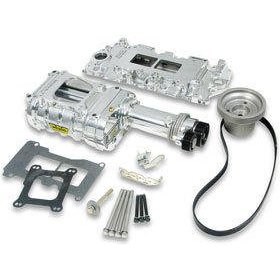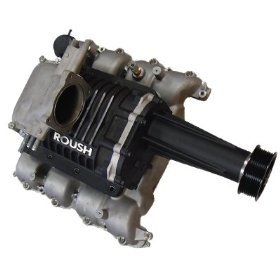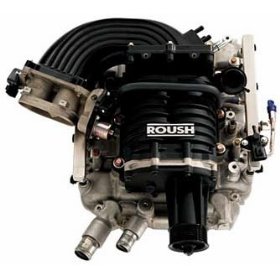How a Supercharger Works

Before I discuss how a supercharger works. I wanted to review a bit of a history for this amazing automotive technology.
Some people do not realize that a supercharger was first installed on a production vehicle in 1906. Now bolt on supercharger kits are common place in the street racing world.
Back in the old days, the leading Car companies that used this forced air technology were Mercedes-Benz and Duesenberg.
These companies put a lot of research and development into improving performance. Both of these car companies dominated the racetrack in the 1920s through the 1930s.
After World War II, larger displacement engines that could produce the same amount of power replaced superchargers.
Also in the late 1950s the forced induction turbocharger started to gain traction. This was because a turbocharger was able to produce more boost at lower RPMs. The trucking industry embraced this automobile technology which allowed extremely heavy loads to be moved easily from a dead stop.
The return of the supercharger

The intake mounted belt driven supercharger started to make a comeback in American car models in 1989. One of the most popular of these models was the 1989 Bonneville SSI.
The standard 3.8 L engine coupled with the supercharger returned excellent performance without much effect on over all fuel economy.
The 3.8 L engine was the perfect platform due to its cast-iron block and cylinder heads. This engine also demonstrated the ability to produce large amounts of horsepower.
Buick had shown this engine’s potential when they bolted on a turbo charger for the T-type and Buick Grand National models.
In 1987, the Grand National deployed the intercooler turbocharger making it one of the fastest rear wheel drive production cars ever produced with a v6 in the United States.
Supercharger operation
Before I get into exactly how it works I wanted you to know that amazon has many highly rated books about superchargers. Covering both theory and operation as well as installation instructions for mounting and tuning the supercharger upgrade on specific model automobiles.
Superchargers are air pumps directly driven by the engines crankshaft via a serpentine belt. They improve horsepower and torque by pumping extra air into the engine in direct relationship to crankshaft speed.

As the supercharger assembly compresses the air, the pressurized air begins to increase in temperature. Since cooler and denser air is desired for maximum power, this heated air is routed through an intercooler before it enters the intake manifold.
When the intake valves open on the cylinder head, the air fuel mixture is forced into the combustion chamber by the pressure generated from the supercharger. The difference between a supercharger and a turbo is that no waste gate or boost control is required on supercharged vehicles.
This is because the speed of the supercharger is directly linked to the rotation speed of the crankshaft. The compressing power is limited by the RPM of the engine itself. This way the superchargers output is controlled directly by throttle position.
On a turbocharger controlling the boost can get more complicated. Older turbo models had a waste gate that opened to bleed off any pressure in excess of 14 psi. Modern turbos are controlling the boost by the geometry of the turbo fins. These are called variable geometry turbos. Basically the VGT Turbo controls the total boost by varying the pitch of the turbo fins.
As we can see for the last hundred years superchargers have come and gone and have come back again. The competition between turbocharging vs supercharging will also continue on local racetracks and new car showrooms. Learn what other types of automotive technology you might find on today’s cars.

